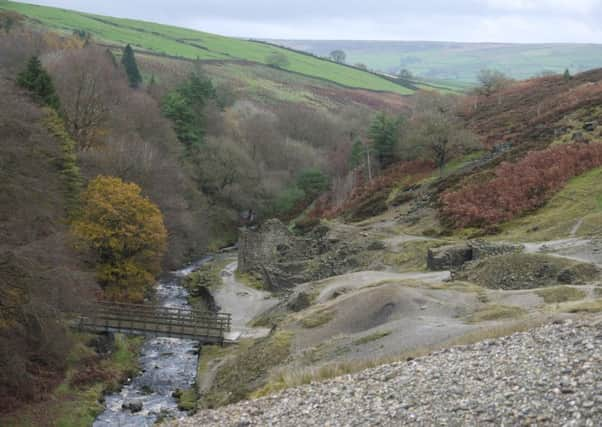Forgotten stories of Nidderdale's industrial past to be retold


Two information boards to tell the story of the 18th and 19th century Prosperous Smelt Mill and Lead Mine are being erected at its hidden away site, located in a quiet valley by Ashfoldside Beck.
The nationally recognised Scheduled Monument fell into ruin after being at the heart of local industry until 1889.
Advertisement
Hide AdAdvertisement
Hide AdIt is one of several historic sites that are being consolidated and conserved as part of a four-year project which is being carried out by the Upper Nidderdale Landscape Partnership with funds from the Heritage Lottery Fund and managed by the Nidderdale Area of Outstanding Natural Beauty (NAONB).
Louise Brown, historical project officer at the Partnership, said: “At the Prosperous site we have been working to stabilise and conserve some of the structures such as the smelt mill and a fragment of wall that is the last remains of the engine house, and capping a mine shaft which lies on a path that people use to walk down through the site.
“By installing the information boards we are trying to give visitors little pointers to give them a flavour of what was going on there and how this quiet, peaceful countryside we think of now was a really busy, loud industrial setting.”
As well as the mine, the Partnership has been working at other sites of heritage interest in Upper Nidderdale, including the former pleasure gardens of Fishpond Wood near Bewerley Hall, the ‘lost hamlet’ of Lodge that was a former medieval grange farm for the Cistercian abbey of Byland, the temporary settlement of Scar which was built to house the workforce, and their families, who built Scar House Reservoir, and Wath Mill which fell out of use in the 1930s.
Advertisement
Hide AdAdvertisement
Hide AdMs Brown added: “By conserving some of these structures and telling people what they are, it’s a way of curating them to future generations. It creates a link to the past and a sense of place, particularly for local communities.”
The Partnership’s work continues until the end of June next year and people can hear more about its works and that of local heritage groups at an ‘Upper Nidderdale Heritage Forum’ on October 7, 10am-4.30pm, at Pateley Bridge Methodist Chapel. Places are £8 and booking is essential, call the NAONB on 01423 712950 or visit nidderdaleaonb.org.uk